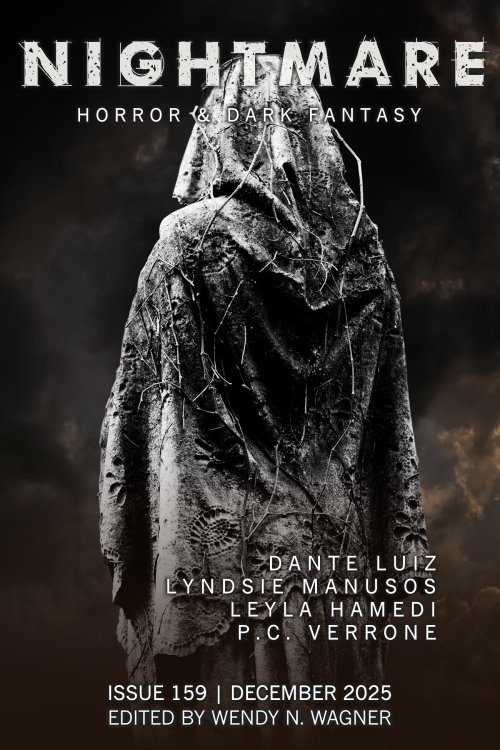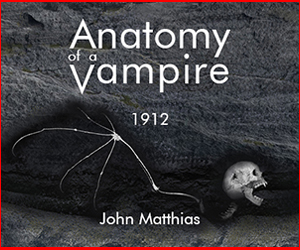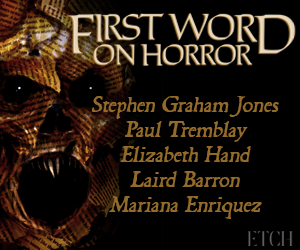Reading Is Dreaming
The Turn of the Screw
Henry James
Many editions
This story’s been bothering me for a long time.
It has the sort of title that sticks in your head: The Turn of the Screw. I knew the title before reading the book, or perhaps I read it and forgot, as I read so many books on the shelves of the rich whose houses my mother cleaned when I was too young for kindergarten; or perhaps later in one of the libraries where I took refuge from a dysfunctional family and the indoctrination of church and school. I skipped both church and school to secretly read the classics as they caught my eye, from Shakespeare to Samuel Beckett, and later the existentialists. Oh, and let’s not forget the science fiction, horror, and modern novels full of ideas way over my head, or the nonfiction I sought out to answer all the questions that adults scolded me for asking. Plays, too, reading out loud in those precious few hours alone after school before sitcoms and sibling rivalry colonized the quiet.
I read and forgot more books in my first two decades than some people do in a whole lifetime, drowning the difficulty of those formative years in these waking dreams we call books. I’d never planned to write them. I’m still a bit surprised—and delighted—that I do.
The Turn of the Screw remains an uncomfortable title for me, a relic in my memory associated with a troubled childhood, suggesting both exacerbation and finality. There’s a lewdness implied by the word “screw” which the Oxford English Dictionary verifies has been used as slang for copulation since the 1700s, and as a crude name for sex workers even before that. Good titles are clues, essential to the meaning of a work—mine certainly are—so I don’t take them lightly. Something crass seems to linger within the phrase.
Also, I can’t help thinking of thumbscrews in a torture device. The author Henry James described the story as “a trap for the unwary,” which I was (vindicated? cheesed off?) to learn in researching this article. My obnoxious man really set out to play a game with his reader, suggesting as many horrible things as possible without ever delivering a clear, definitive explanation.
I resent him for it. I approve.
Horror commonly offers a series of signs or events that culminate in producing a singular effect, the sort of thrill we call fear. But James is working with multiplicity in this tale, with a pervasive unsettlement and disintegration of information that becomes, the longer one investigates the piece, a sort of cognitohazard. As a ghost story, it’s less a narrative about the haunted mansion where it takes place or a true crime drama about the dysfunctional characters, both past and present, who reside there—and more of a device which infects the reader with the “ghost” of ambiguity, corrupting the factual, and leaving us blighted.
Haunted.
It’s doubly infuriating, too, presented in a florid, stream-of-consciousness style that was experimental at the time of its writing and still challenging to casual modern readers, further obfuscating any easy resolution that will force the ghosts to unlatch.
And trust me: it doesn’t get any easier upon rereading. I’ve been chewing through it intensely for the past few days, trying to figure out why I’m wasting my time writing about an old book that I can’t say I actually enjoyed reading.
I’m fascinated, though, perhaps in the most occult sense of the word. The unspoken heart of the book holds a perverse secret. The wonder of not-knowing may be a base form of the wonder and religious awe we find in cosmic horror; I’ve never thought about it before now. All I know is this is my fourth reading (that I consciously recall) and The Turn of the Screw will not let me go.
Maybe the trick is that the reader is left holding the bag, responsible for the conclusions we draw or don’t draw from the slippery and mutating evidence presented. There are suggestions and implications of murder, child abuse, sexual exploitation, possession, Satanism, incest, psychosis, necromancy, or possibly something worse.
Definitely something worse.
The hysterical tone of the prose badgers us with sickening insistence, circling the truth without naming it. It’s a nagging, cloying, frustrating experience, like trying to reason with a schizophrenic parent. Looking deeper into the narrative for a solution only leads down a hall of twisted mirrors where we gaze at our own worst thoughts.
Thoughts are like ghosts. They lack physical substance and rely on our perceptions and beliefs to realize any measure of significance.
And if thoughts are ghosts, memories are the ghosts of ghosts, fragments of ideas about who we are or what we’ve experienced that haunt the present moment with an uncertainty we wish we could deny. Like the framed narrative of The Turn of the Screw—a written memoir delivered by Douglas who, several decades ago, was briefly (amorously) acquainted with the unnamed governess who is its author, who received her manuscript twenty years after her death, and then read it to his friends twenty years after that, and is now also dead, usurped by our current unnamed narrator who introduces the story in the book we’re reading (whew!)—memories, as much as we want to believe in them, come wrapped in layers of questionable provenance.
Older memories become corrupted by time, not only through forgetting, but by each instance of retelling in which we rehearse or embellish or reframe them. Memory is an active process. It functions largely by connection and accumulation. It’s reinforced—and sometimes shattered—by emotional impact. You’ll remember something better if you have the full context, just the right level of emotional arousal, and a good night’s sleep so your brain has time to correctly file it. But too much information comes at us with each new moment to process and store every detail of existence, and so memory edits the past, deleting files, storing them within other, similar files, conflating related items and events with an internal and unconscious logic that can be uncannily akin to dreams.
If you spend any time listening to witnesses, perpetrators, or crime survivors, especially those most deeply traumatized (and I include perpetrators among the traumatized), you’ll see the results of this process in their testimonial gaps. Prevarication in brain-damaged or cognitively deteriorating patients is also common. If you really think about it, when we remember anything, we are fundamentally telling a story.
The ghosts are not with us in the room, nor are our past selves who we conjure with such faith and veracity. I’m endlessly intrigued by memory, by its connection with dreams, by the ways it functions and malfunctions, intersecting with character, personal expectation, desire for control or gratification; the ways it avoids and resists and warps both reality and time. If consciousness and self are constructed from memory, then the ego dreams itself into existence, making ghosts of us all. Such concerns percolate throughout my work as a writer, and through the voices of my abominably unreliable narrators who are, for all their crimes, simply doing their best.
After all, no one ever sets out to be a villain or a liar.
Take the unnamed governess of The Turn of the Screw who is notorious in literary analysis for being a prototypical unreliable narrator. One indisputable fact among the vagaries of the text is that she holds ten-year-old Miles when he dies.
The last two lines of the book read:
“I caught him, yes, I held him—it may be imagined with what a passion; but at the end of a minute I began to feel what it truly was that I held. We were alone with the quiet day, and his little heart, dispossessed, had stopped.”
She holds him. The question is, how tightly?
Extracting the action of the last few paragraphs while ignoring her justifications, the scene blocking shows that she leaps on Miles, holds him against his will, shakes him, lets him go for a moment, and then catches and holds (smothers?) him until his heart stops. The stage directions prove her a murderer, but the established written record, her continued employment in childcare, and Douglas’s esteem, suggest innocence. Even this clear conclusion to the story, the death of a child, remains inconclusive.
The ending is abrupt—too abrupt, lacking the closure of a neat bookend predicted by the opening. It’s like that moment when you wake from a bad dream, jolting up, thrust out of the story at the exact moment the narrator realizes she holds the dead body of the small, beautiful boy with whom she’s admitted being inappropriately in love.
Perhaps we have to enter the dream as both witness and perpetrator to discover the monster at the center, to make any sense of it. Or maybe there is no monster, only this gaping absence of meaning. The self-corrupting narrative of The Turn of the Screw works on the reader’s memory very much like a bad dream, frustrating scholars, bringing them back to it again and again throughout literary history. It’s hard to recall the precise details, the order of events, what exactly has been said by whom, and what those statements—full of incomplete sentences, double meanings, and jagged interruptions—mean without participating in the story by adding a personal interpretation. I’ve gone down the rabbit hole in the past few days and found every explanation from Freud to pseudo-autobiography to the book of Genesis.
My memory of the story, no matter how many times I’ve read it, remains tied up with the beguiling and not completely unpleasant childhood sense that there’s something I’ve missed, or blocked, or repressed, or that I’m still too inexperienced to understand. That absence sucks me in. It’s a discomfiting kind of wonder, worthy of exploration, a horror that seeps more than shocks. It leaves me alone in the dark with something worse than my worst thoughts.
Good job, James. Haunting achievement unlocked.








